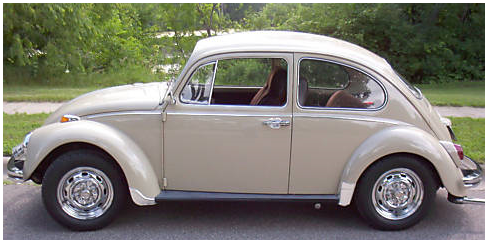I was eighteen years old, fiercely independent and ready to go to college. We were living in Wyoming at the time and the college was in Florida. The long road trip ahead of me was the first one that I had ever undertaken by myself. I would have to make all the preparations beforehand, all of the decisions along the way and, of course, I was responsible for how I performed in school.
But first my trusty VW Bug had to get me there.
I set about to show everyone (especially my parents) that I could handle all of the preparations. I plotted the route for my 4 day journey. I decided on everything that had to go with me to college and made sure that it would fit in the car. Most of all, I prepared the car.
I checked the tires, the windshield washer fluid, the oil levels and so on. Boy, wasn’t I being thorough? And without any help to boot. About that time, my father asked if I had checked the sparkplugs. Well, I hardly needed any help from him or anyone else. I was a grown up and besides, didn’t he see what a great job I was already doing? “I’ll take care of it!” I snapped and he left the subject alone.
The departure day finally came and I drove off south through Colorado. Goodbye to living full time with the family. Hello to the college life. Independence day had arrived and I was doing just fine.
The first day was uneventful. I made it through the mountain passes of southern Colorado (barely) and arrived late in the day in Dumas, Texas. Somewhat nervously I checked in to the motel while halfway expecting that they would tell me I was too young to be traveling alone. All I remember about that night was the excitement of being on the road. I couldn’t sleep so I got up at 4 AM to start the next day’s travel. I left the motel in the dark that Sunday morning planning to travel a great distance that day (wouldn’t everyone be impressed with my accomplishment).
 That’s when it happened.
That’s when it happened.
My VW engine began to misfire. It jerked as I tried to get up to highway speed. I was mystified about the cause. This had never happened before. What was I going to do? I limped into Amarillo looking for a miracle. Unfortunately, there were no car dealers open at 6 AM on Sunday morning. I decided to keep going for a while. Later that morning I stopped to call home. Specifically I wanted to talk to my brother because he knew a lot more about cars than I did (or do).
He asked me, “Did you check the sparkplugs?” Uh-oh. “Actually, I checked everything but the sparkplugs before leaving home,” I replied sheepishly.
Sometimes in corporate life we are diligent to check many things.
Read the rest of this entry
